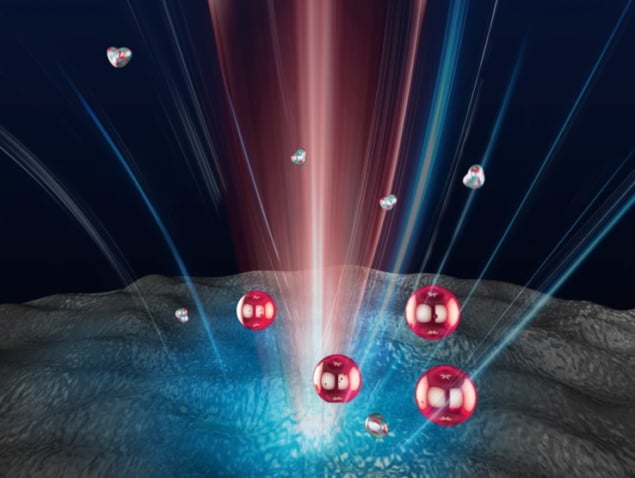
Scientists in the US and China have created novel optical tweezers that trap particles at lower temperatures and use weaker lasers than conventional optical tweezer techniques, reducing the risks of photodamage and thermal damage. The novel device takes advantage of optical refrigeration to trap particles via thermophoresis, rather than optical force.
In 2018, a share of the Nobel Prize in Physics was awarded to Arthur Ashkin for inventing optical tweezers. These instruments use a highly focused laser beam to generate forces that can hold and move tiny objects, such as nanoparticles, atoms and biomolecules. They have now been involved in notable breakthroughs in nanotechnology, physics, biological science and chemistry.
But there are issues with optical tweezers. To produce the necessary forces, they require a strongly focused laser beam with high optical intensity. During prolonged interactions, this can cause both photodamage and a build-up of heat that can alter or damage particles and biological samples.
Now researchers at The University of Texas at Austin and Shaanxi Normal University have developed a new technique, which they have dubbed opto-refrigerative tweezers, to overcome these issues. This method relies on thermophoresis (movement of a particle in a temperature gradient) and the use of an optical material that cools when a laser beam is shone on it, a phenomenon known as optical refrigeration.
The idea is to create a cold spot on the material so that the particle migrates towards it. “Because most particles are naturally thermophobic, they tend to move from the hot region to the cold region,” Jingang Li, a physicist at The University of Texas at Austin explains. “So they can be driven to this cold spot created by the laser and then trapped at the cold region.”
As well as stopping overheating and thermal damage, this tweezer technique also uses a weakly focused laser beam, reducing photodamage, because it is not dependent on optical force. “We don’t need a highly focused laser beam, we just need to create a temperature gradient via this optical cooling,” Li tells Physics World.
Cold attraction
To realise their opto-refrigerative tweezers, Li and his colleagues created a substrate from ytterbium-doped yttrium lithium fluoride (Yb:YLF) crystals. When a laser with a wavelength of 1020 nm is shone on these nanocrystals it has an unusual effect, known as anti-Stokes fluorescence, which causes the material to cool. Li explains that materials usually absorb photon energy and convert it to heat, but the electronic properties of Yb:YLF cause it to emit a photon with a higher energy than it absorbed. “By this unique interaction the material actually loses energy, it loses heat and cools,” Li says.
When the researchers shone a 1020-nm laser on their substrate they observed an instant drop in temperature of around 7.5 °C at the laser beam centre. As they increased the intensity of the laser, the temperature dropped further and the temperature gradient across the material increased.
The team used their opto-refrigerative tweezers to attract, trap and release a 200-nm fluorescent polystyrene nanoparticle. The nanoparticle was placed in heavy water above the crystal substrate, chosen because it has low light absorption at 1020 nm. They found that the temperature gradient provided quite a long working range compared with optical tweezers, allowing them to trap nanoparticles that were more than 10 µm from the laser beam. When they increased the intensity of the laser, the nanoparticle became more confined to the laser beam centre. They also trapped a fluorescent protein, achieving similar results.

Tiny optical tweezer traps nanoscale objects
To test the advantages of a weaker laser beam and colder temperatures, the researchers compared the same 1020-nm laser used as an optical tweezer and an opto-refrigerative tweezer on the fluorescent polystyrene nanoparticle. They found that the conventional optical tweezers caused a marked drop in the fluorescence intensity of the nanoparticle, attributed to photobleaching and thermal bleaching, while the particle trapped by the opto-refrigerative tweezers only showed a slight decrease.
The study, published in Science Advances, demonstrates that opto-refrigerative tweezers are possible. Li and his colleagues now plan to optimize the system. This will include improving the substrate to generate a more uniform cooling spot and enhancing the trapping ability to enable further reductions in the power of the laser.



